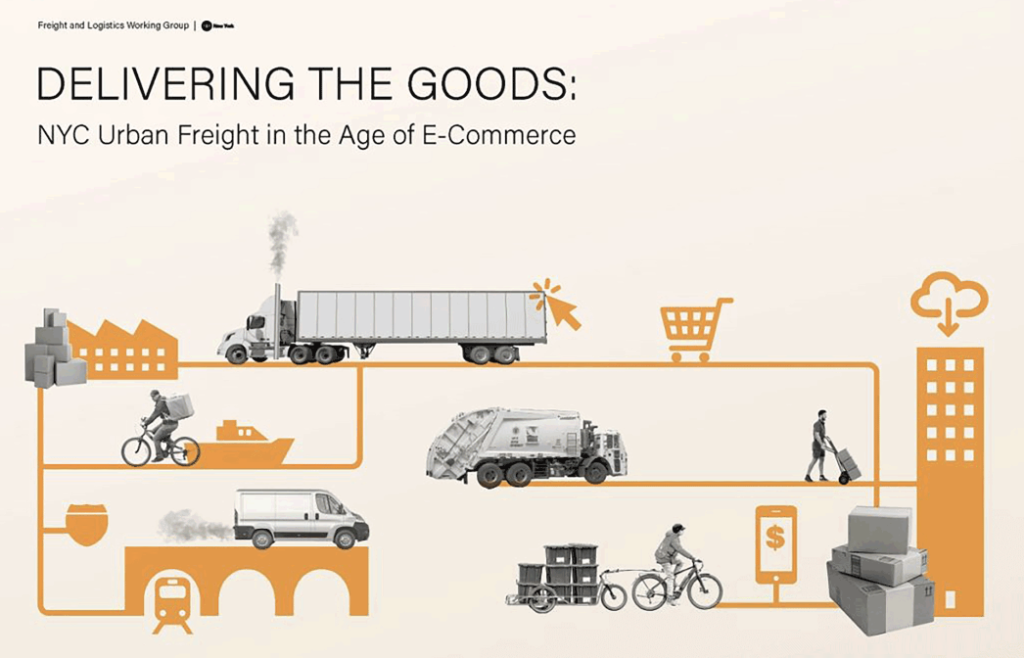Each year, 365 million tons of freight move through the New York City area. While this flow of goods brings many economic benefits, it also raises complex challenges, especially at the middle-mile and last-mile segments of the delivery supply chain, contributing to traffic congestion, greenhouse gas emissions, public health and safety issues, and the degradation of public spaces.
The AIANY Transportation and Infrastructure Committee, AIANY Planning and Urban Design, and AIANY Committee on the Environment have released Delivering the Goods: NYC Urban Freight in the Age of E-Commerce.

The interdisciplinary document, developed by a task force of planners, designers, architects, academics, and traffic engineers, outlines the impacts of urban freight on New York City and offers innovative and equitable solutions to counter the burdens imposed on communities by the movement of goods in the city.
In developing the document, the task force interviewed stakeholders. It held listening sessions to understand best practices in other cities and local community, industry, and agency perspectives. AIANY presents current-state goods movement scenarios in New York City followed by a series of prototypes developed with Stantec, illustrating opportunities to improve land use and curb management for parcel deliveries, construction logistics, paper wasre and food service supply.
The approach considers “the Interface”—the spaces of greatest impact where goods movement intersects with place-making, where the public meets private, and where transportation overlaps with land use. The document concludes with short- and long-term recommendations for transforming goods movement in the city over the coming decades. The document is a good and inspiring example for cities worldwide.
Download the report here.
Source: AIANY
